What is Sag in Overhead Conductor ?
What is Sag in Overhead Conductor ?
Sag Definition
Sag in a transmission line is defined as the vertical distance between the highest points of support and the lowest point of the conductor.
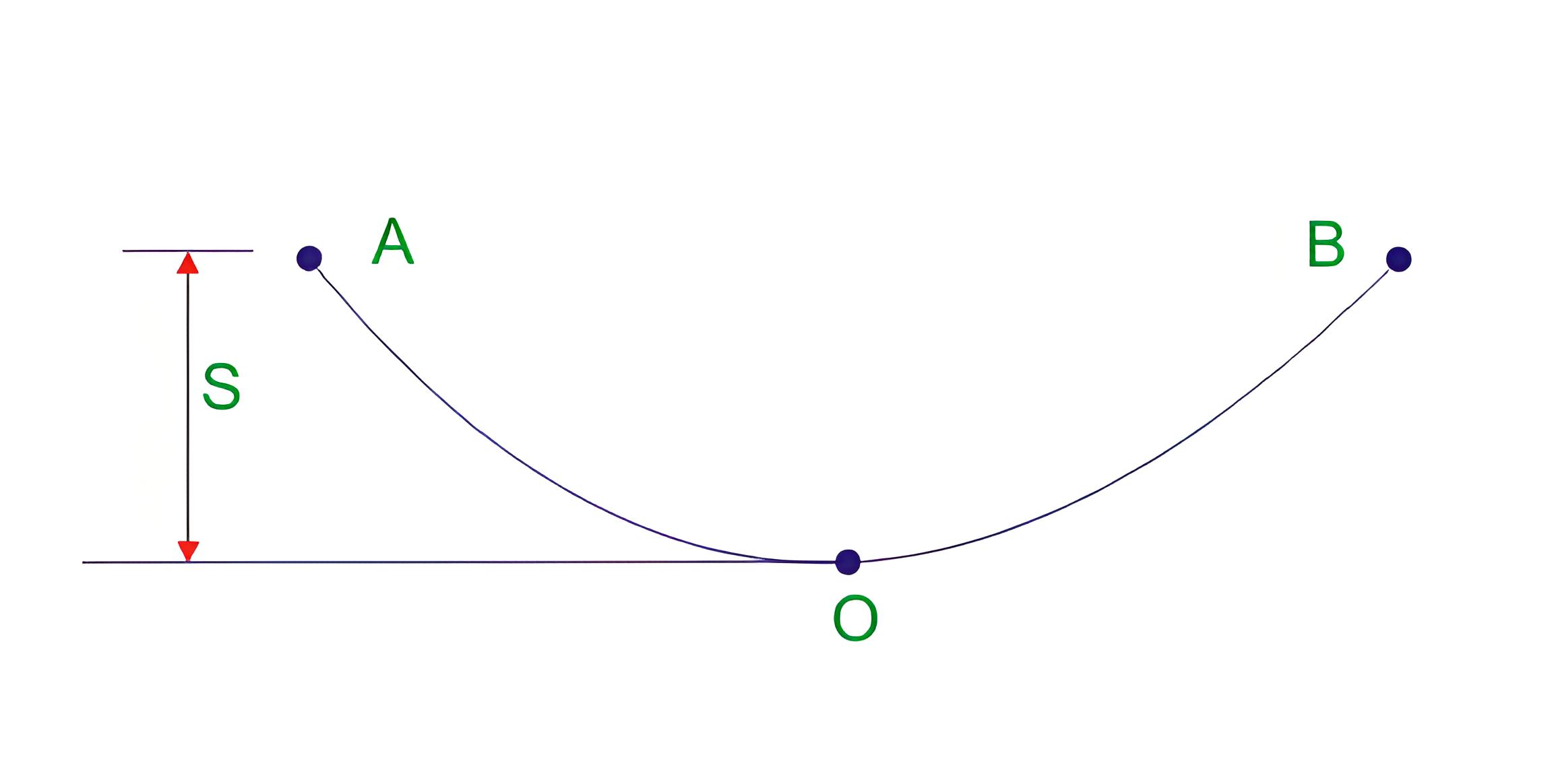
Purpose of Sag
Including appropriate sag protects transmission lines from excessive tension and potential damage, especially under adverse conditions.Sag is mandatory in transmission line conductor suspension. The conductors are attached between two supports with the perfect value of sag.Sag is critical as it prevents the conductor from being overstretched and experiencing unsafe tension levels, thereby enhancing durability.
If the conductor is stretched fully during installation, wind exerts pressure on the conductor, hence the conductor gets a chance to be broken or detached from its end support. Thus sag is allowed to have during conductor suspension.
Some important points to note
When the same leveled two supports hold the conductor, a bent shape arises in the conductor. Sag is very small with respect to the span of the conductor.
The Sag span curve is parabolic.
At each point along the conductor, the tension is always tangential, maintaining balance across the span.
Again the horizontal component of the tension of the conductor is constant throughout conductor length.
The tension at supports is nearly equal to the tension at any point in the conductor.
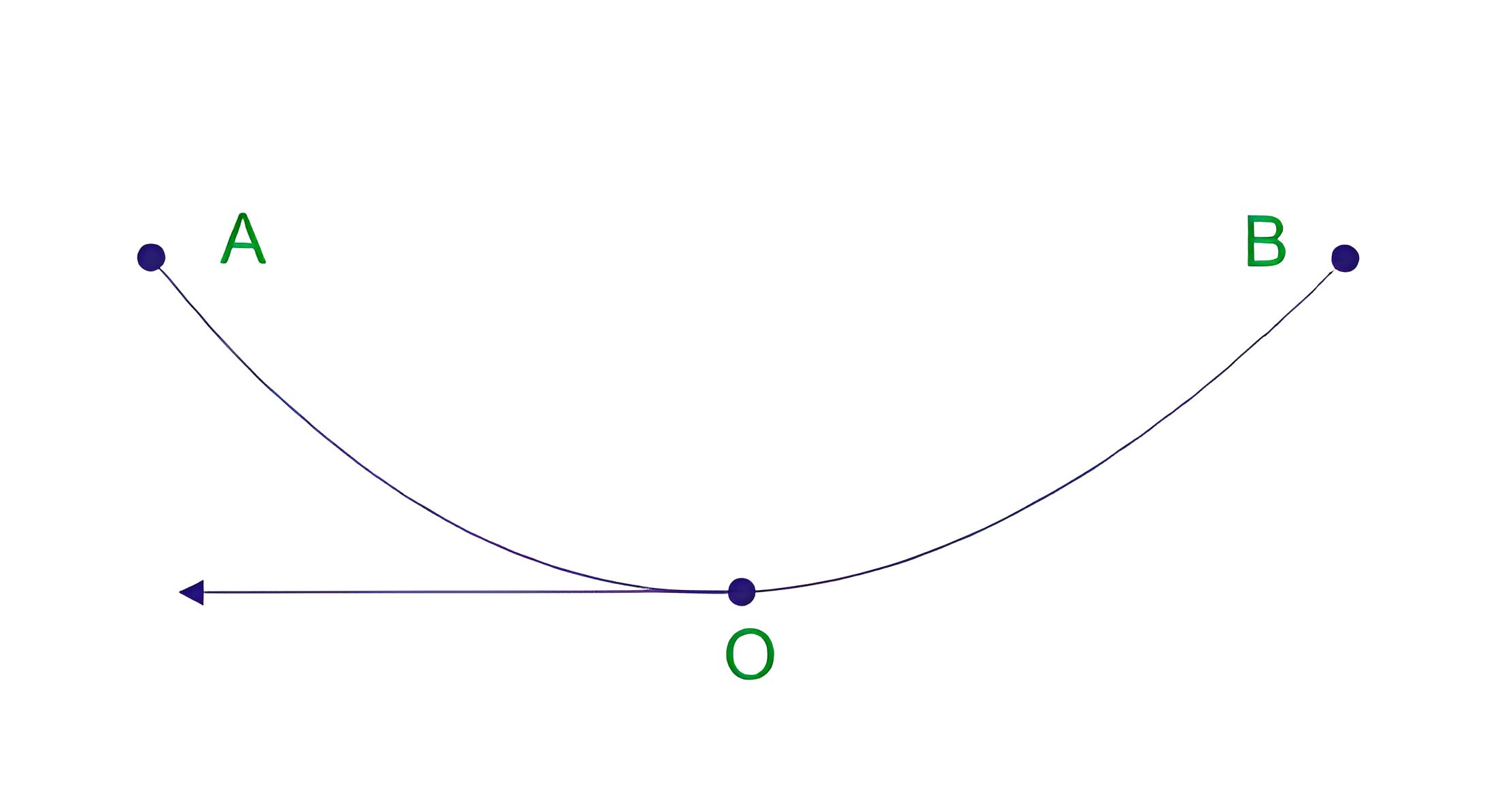
Calculation Methodology
When calculating sag in a transmission line, two different conditions need to be considered:
When supports are at equal levels
When supports are not at equal levels
The formula to calculate sag changes based on whether the support levels (i.e. the transmission towers holding up the overhead conductor) are at the same level.
Sag calculation for supports are at equal levels
Suppose, AOB is the conductor. A and B are points of supports. Point O is the lowest point and the midpoint.Let, L = length of the span, i.e. ABw is the weight per unit length of the conductorT is the tension in the conductor.We have chosen any point on the conductor, say point P.The distance of point P from the Lowest point O is x.y is the height from point O to point P.
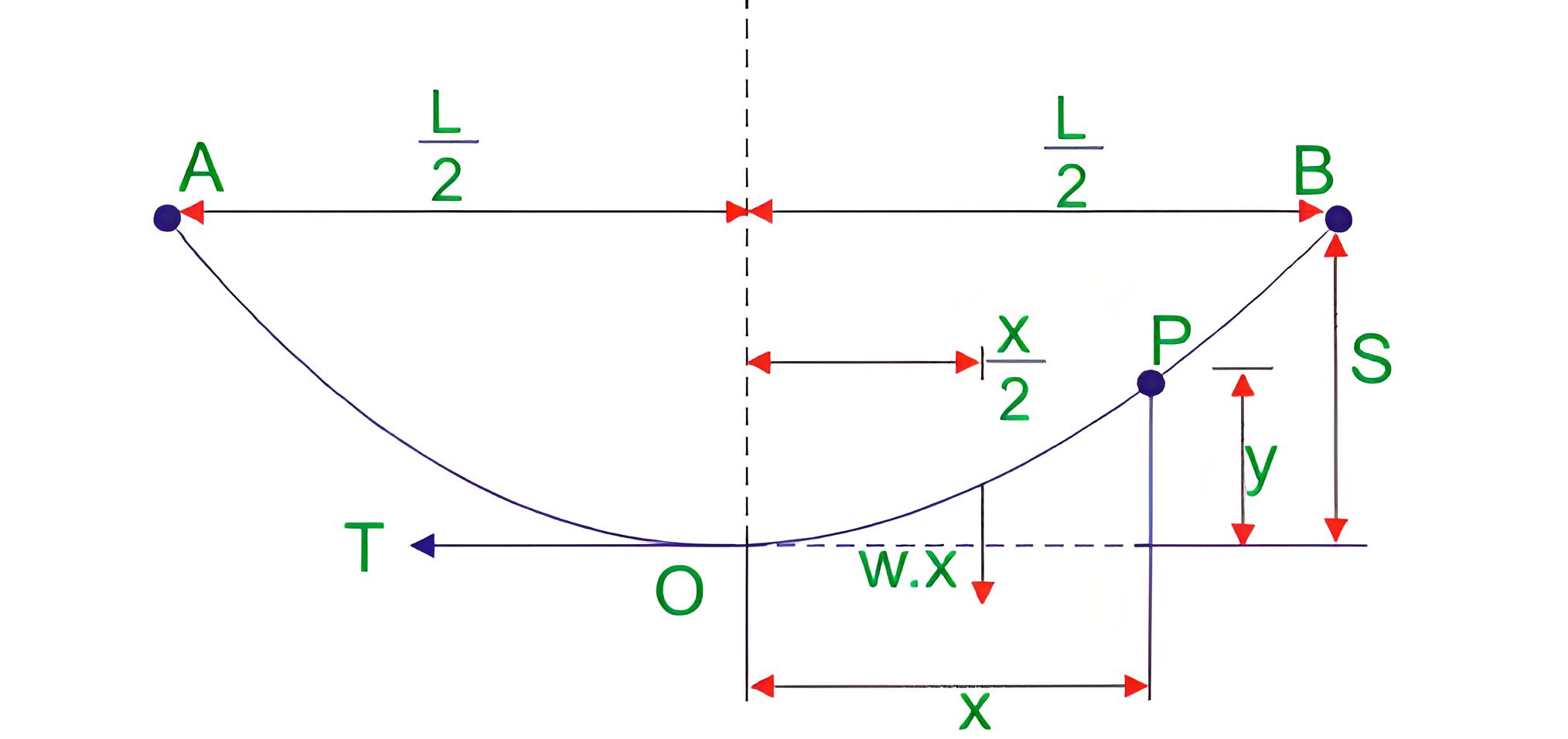
Equating two moments of two forces about point O as per the figure above we get,
Sag calculation for supports are at unequal levels
Suppose AOB is the conductor that has point O as the lowest point.L is the Span of the conductor.h is the difference in height level between two supports.X 1 is the distance of support at the lower level point A from O.x2 is the distance of support at the upper-level point B from O.T is the tension of the conductor.w is the weight per unit length of the conductor.
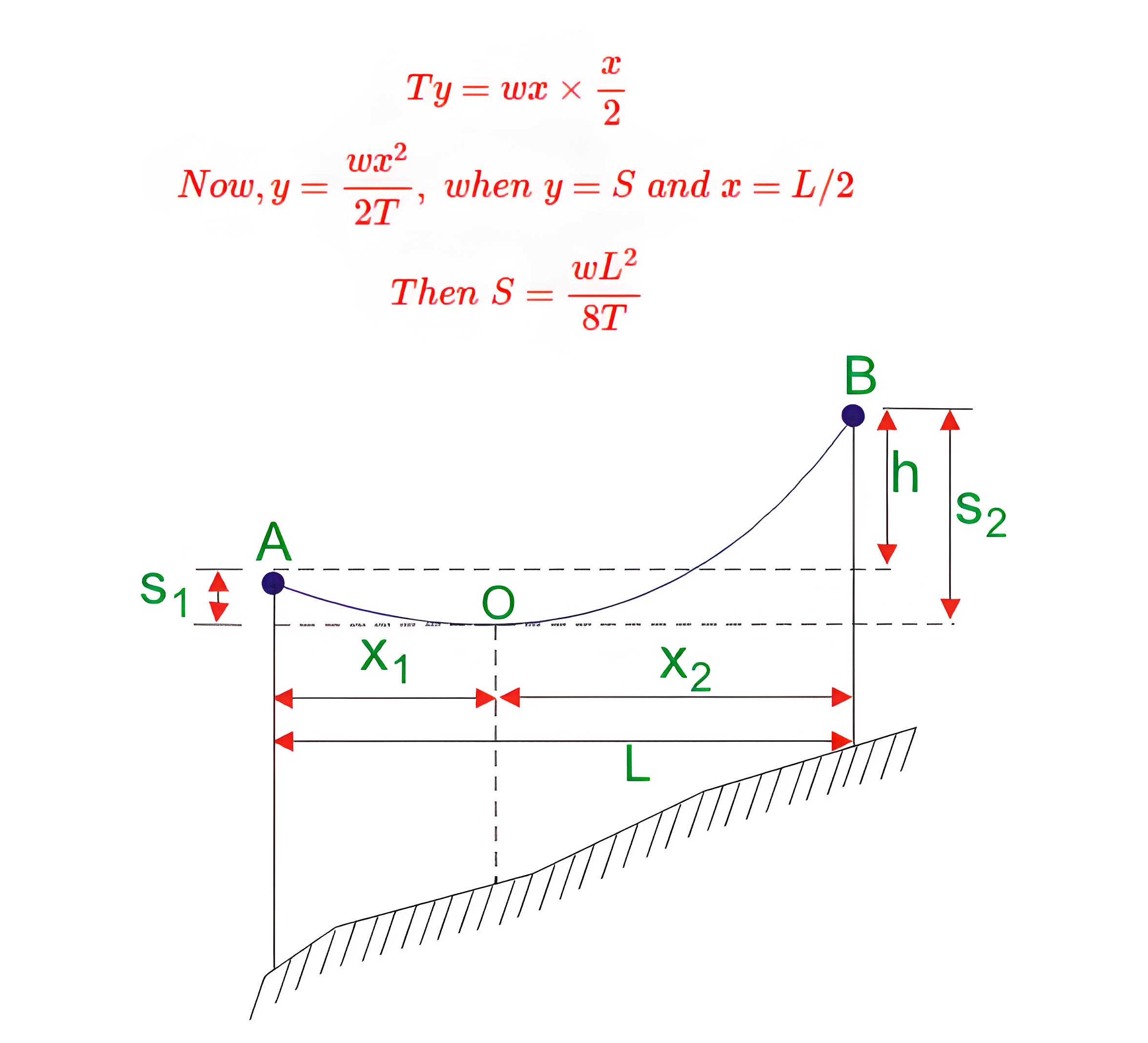
So, having calculated the value of x 1 and x2, we can easily find out the value of sag S1 and sag S2. This formula calculates sag under conditions of still air and normal temperature, where only the conductor’s own weight affects it.
Environmental Impact
Some of the effects of ice and wind on sag include:
The weight per unit length of the conductor is changed when the wind blows at a certain force on the conductor and ice accumulate around the conductor.
Wind force acts on the conductor to change the conductor self-weight per unit length horizontally in the direction of the airflow.Ice loading acts on the conductor to change the conductor self-weight per unit length vertically downward.Considering wind force and ice loading both at a time, the conductor will have a resultant weight per unit length.
The resultant weight will create an angle with the ice loading down ward direction.Let us assume, w is the weight of the conductor per unit length.wi is the weight of ice per unit lengthwi= density of ice × volume of ice per unit length w is the force of wind per unit length.ww = wind pressure per unit area × projected area per unit length
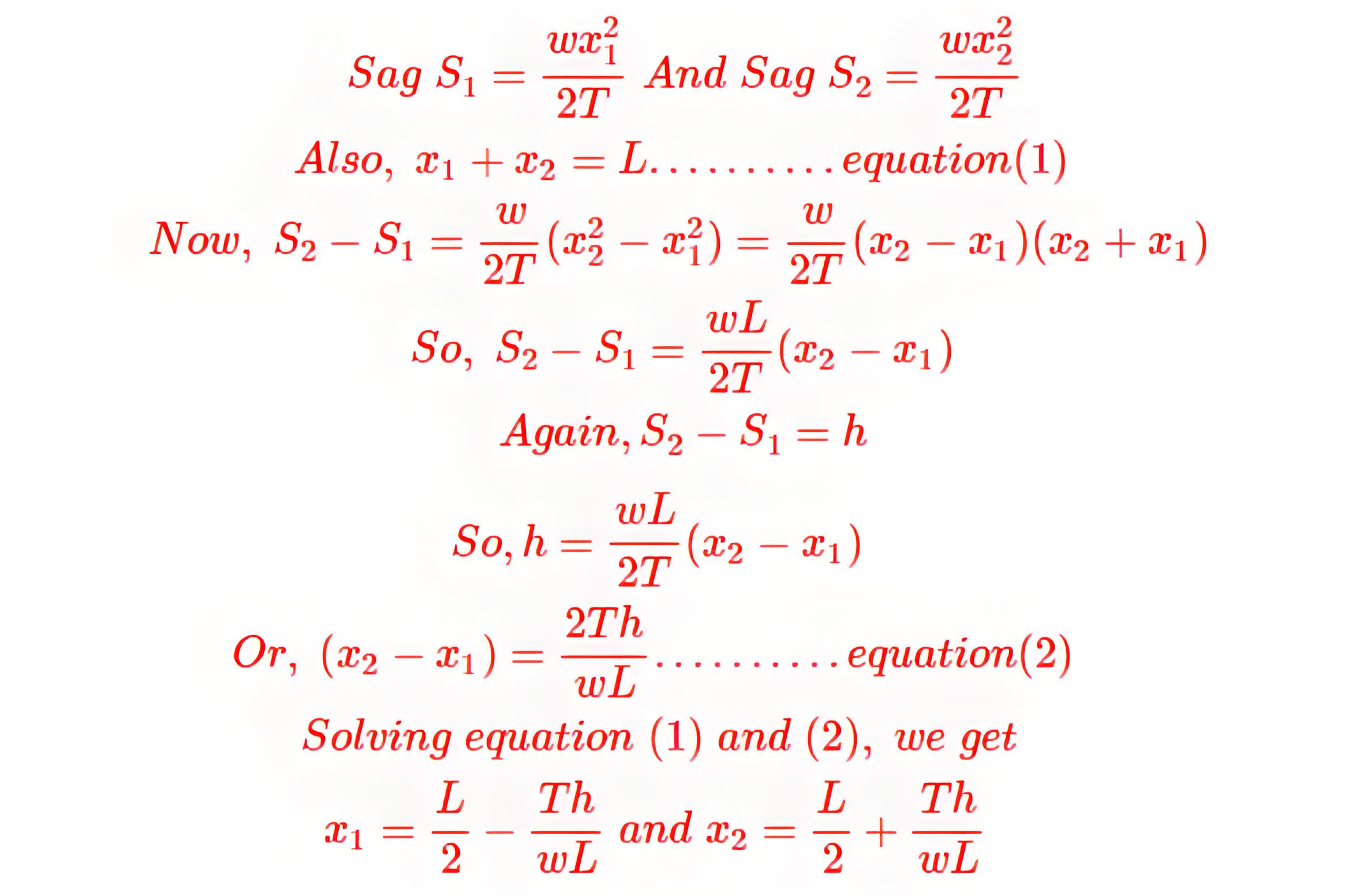
So, the total weight of the conductor per unit length is
The sag in the conductor is given by
So the vertical sag
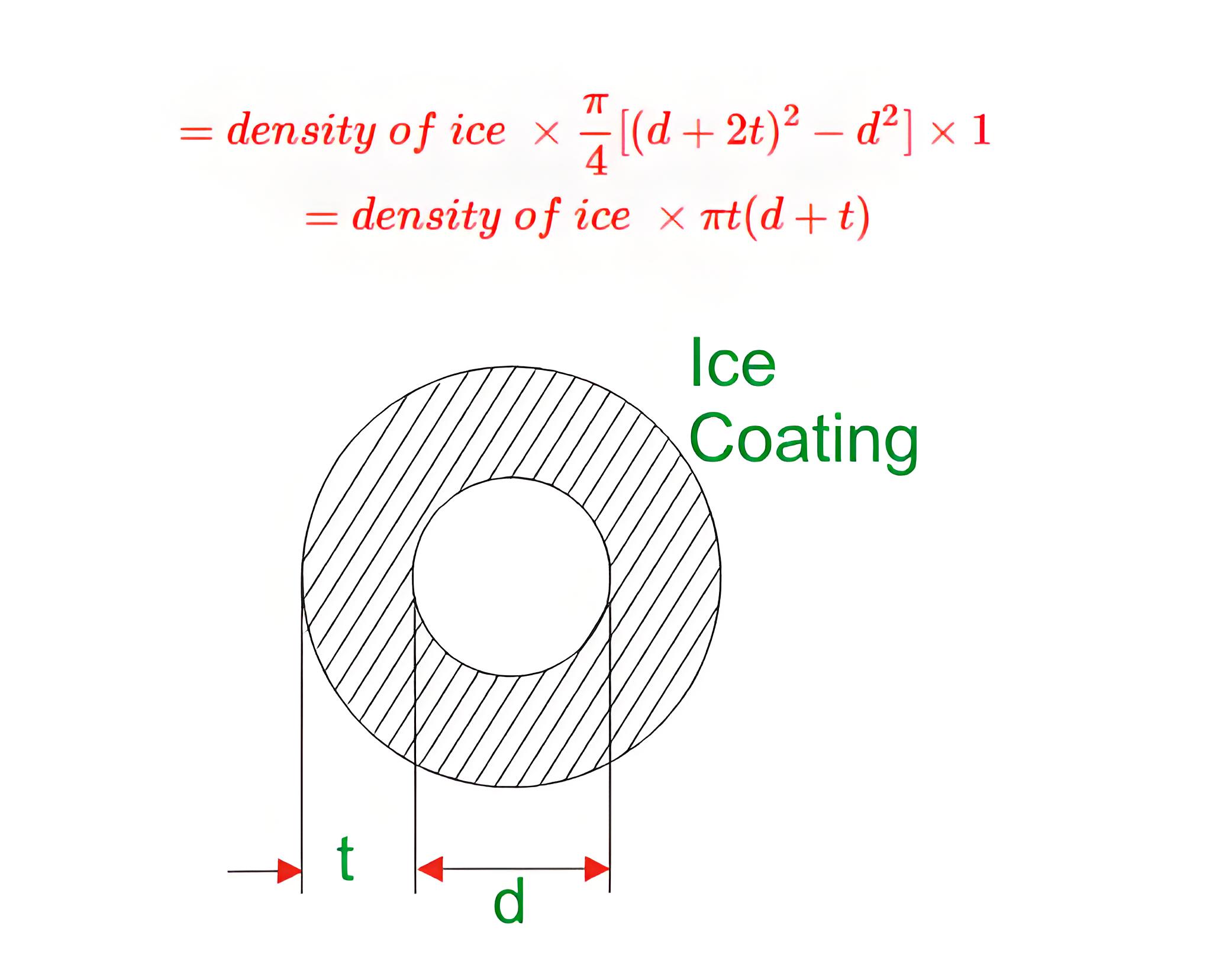
Safety Considerations
Proper sag calculation is vital for maintaining the structural integrity and operational reliability of transmission lines.
The Electricity Encyclopedia is dedicated to accelerating the dissemination and application of electricity knowledge and adding impetus to the development and innovation of the electricity industry.













